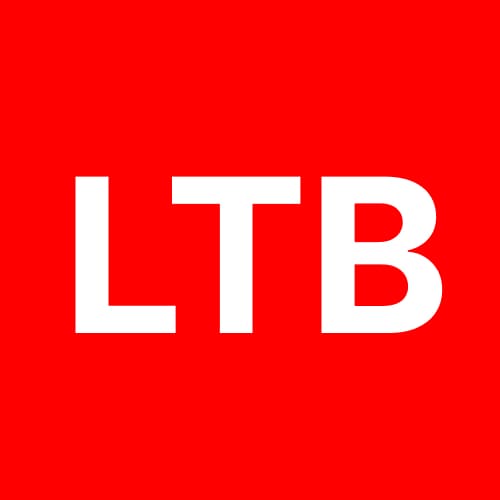
HOME / BLOG / STATISTICS
X (Twitter) Ads Statistics 2025: 96+ Stats & Insights [Expert Analysis]
- October 23, 2025
- Bill Nash
- 5:32 pm
In a digital marketing landscape flocking to every new channel, the advertising platform offered by X (formerly Twitter) remains a compelling opportunity for brands of all sizes. Many marketers write it off as “just a tweeting platform,” but the data says otherwise.
This article dives deeply into the latest statistics for Twitter/X ads—covering reach, cost, performance and strategic insights—so that you can benchmark your campaigns with confidence and make data-driven decisions.
Table of Contents
Users & audience size
Estimated monthly active users (MAU) figures reported for X in 2025 vary by source: ~415M (SproutSocial summary).
Alternative MAU estimates in 2025: ~561M (Backlinko / July 2025 snapshot).
Another estimate cited: ~586M potential ad reach (platform reach figures cited across industry writeups).
Largest age cohort: 25–34 years (about ~36% of users).
Second-largest age cohort often reported as 18–24 (roughly ~34% in many summaries).
Gender split is male-skewed; many sources report roughly 60–64% male / 36–40% female.
Time spent per user per day commonly reported in industry summaries at ~30 minutes.
X users are more likely than average to have higher household incomes (large share in >$100k bracket in some markets).
X’s user base is disproportionately concentrated in a handful of markets (U.S., Indonesia, U.K., etc.).
Many sources show substantial user churn 2022–2024 with recovery or stabilization signals in 2025.
Users are often highly engaged with news / real-time events — X remains a top platform for live news consumption.
Roughly 35% of X users interact with brand content daily (industry summaries).
A significant portion of users use X for product research (sources cite ~38% using it to research products).
X tends to skew younger (combined 18–34 often >70% of users in several demographic reports).
Device usage: mobile is the dominant access method for X (industry summaries/marketing pages).
Advertising revenue & spend
Reported ad revenue figures for X in 2024 vary across sources; common figures cited are $2.5B to $3.14B for 2024.
In 2024 many summaries reported ad revenue declines vs 2021 levels; 2021 ad revenue (~$4.46B) is frequently cited as a high-water mark.
eMarketer/industry forecasts projected 2025 U.S. ad revenue growth ~17.5% and global ad revenue growth ~16.5% (2025 projections).
Small businesses commonly report monthly ad spends in the $101–$500 range on X.
The media sector accounts for a large share of ad spend on X (reports often cite ~32% coming from media companies).
A sizable share of X’s revenue historically came from U.S. advertisers — the U.S. accounts for a disproportionate share of ad revenue vs its share of users.
Industry trend: after big advertiser pauses in 2022–2023, some advertisers returned in 2024–2025, driving projected partial recovery.
Surveys (Kantar / other polling) showed ~26% of advertisers planned to cut X ad spend at one point due to trust/brand-safety concerns.
Advertiser trust / brand safety scores for X were reported low in 2024 (single-digit trust in some surveys).
X’s ad business mix includes Programmatic, Direct-sold, and self-serve Promoted formats (industry docs).
Some advertisers historically relied on the “Follower objective” ad product; X deprecated the Promoted Accounts / Follower Objective in 2023.
Industry writers reported that a return of some advertisers in 2025 was partially driven by changes in platform leadership & policy — and market dynamics.
Global social ad spend grew overall in 2024–2025 (social platforms collectively), helping recovery for many networks including X.
X’s ad revenue share from larger advertisers vs small advertisers has shifted through 2022–2025 as big brands paused and SMBs increased activity.
Analysts emphasize that X’s ad revenue remains well below its 2021 peak despite 2025 growth projections.
Ad cost & pricing benchmarks
2025 median benchmarks reported by Hootsuite: CPC ≈ $0.18 (median), CPA ≈ $21.55, CPE ≈ $0.13 in their dataset. (Hootsuite ad benchmarks 2025).
Hootsuite also reports CPM ≈ $2.09 (X) vs $2.53 (Meta) in its 2025 snapshot.
BusinessOfApps listed X Ads CPC (2025 snapshot) at ~$0.38 in a CPC comparison table.
WebFX reports cost per first action $0.26–$1.50 and cost per follow $~$1.01–$2 typical ranges (surveys/aggregations).
Industry trackers show CPC ranges across verticals and objectives typically from $0.18 to $2.50+, depending on format and targeting.
CPM comparisons across platforms often show X with a lower CPM than Meta / Instagram in some periods (but varies by region/season).
Promoted account costs historically ranged widely — often $2.50–$4.50 per follower in older benchmarks (and later changes/deprecation affected this).
Advertisers commonly bid per “first action” (click/reply/retweet/like) — bidding structure affects realized CPC.
Industry trackers show cost variation by objective (awareness vs conversions): awareness (CPM) usually cheaper; conversion goals push CPA higher.
Seasonal demand and news events can spike CPC/CPM on X due to concentrated real-time attention.
Many SMB advertisers report keeping monthly budgets small ($101–$500) to test performance before scaling.
Benchmarks: a “good” engagement rate on X in 2025 is often cited around 0.5–1% depending on industry.
Industry surveys show median engagement rates vary drastically by industry and by whether posts are organic vs promoted.
Cost per engagement (CPE) median figures reported in some 2025 datasets near $0.13–$0.20 (varies by dataset).
Some third-party trackers and consultants reported X CPCs in 2025 around $0.38–$0.80 in comparative tables.
Ad formats & placements
Common X ad formats: Promoted Tweets, Promoted Trends, Promoted Accounts (historical), In-stream video ads and various video/promoted media formats.
X’s ad platform provides audience insights (interests, behaviours, device, location) for targeting.
Video ad consumption surged on X; sources report large increases in daily video views year-over-year (e.g., billions/day figures reported in 2024).
In-stream video and short video formats have become a focus for advertisers as X pushes richer media.
Promoted Trends (top-of-timeline trend placement) remains a premium/high-cost placement for high-visibility campaigns.
X product changes in 2023–2024 affected available objectives and some ad units (e.g., deprecation of follower objective).
Carousel-like and multi-media creatives are commonly used to improve CTR on X timelines (industry best-practice guides).
X’s ad inventory includes placements inside conversations, search, and Explore-like surfaces (depending on product updates).
Ad formats that blend with organic timeline content tend to perform better in engagement metrics, per platform guidance.
Creative best practice from platform guides recommends punchy copy + short video for higher completion/engagement rates.
Many advertisers use X for real-time/event campaigns (sports, live events, news) because of the platform’s immediacy.
Interactive ad formats (polls, reply calls-to-action) are used to drive engagement rather than pure reach.
X has promoted more video-first placements and measurement tools to support video advertisers in 2024–2025.
Some ad formats have been paused or changed over time as X re-prioritizes product features; advertisers need to monitor product release notes.
X’s ad console + API continue to evolve; programmatic buyers still have access to many inventory types via partners.
Performance & engagement
X users reportedly spend ~26% more time viewing ads compared to other social platforms in several vendor claims.
Some reports show ad engagement rose ~22% between 2023 and 2024 in aggregated datasets.
Reported average engagement rate per tweet (by follower) across all industries: ~0.03% in some RivalIQ datasets.
Industry “good” benchmarks for engagement on X are often 0.5–1% (contextual—varies widely by industry).
Video posts generally outperform static images/text on X in engagement metrics in many 2024–2025 reports.
Ad click-through-rates (CTR) and conversion rates on X vary widely by vertical; conversion rates are generally lower vs search ads but useful for awareness/engagement.
Engagement rate declines were reported in 2024 (some sources recorded drops ~15–20% in organic tweet frequency and engagement changes).
Many brands keep X as part of an omnichannel strategy — combining awareness + conversational engagement to move audiences down funnel.
Benchmarking by industry is essential — some industries see much higher interaction on X than others (media, entertainment, politics).
Hootsuite’s sample dataset reported an engagement rate ~0.59% in their 2025 benchmarks (dataset/context dependent).
Improvado and other analytics vendors note that dashboards and visualizations materially improve advertiser decisions on X campaigns.
Video completion and view rates on X rose strongly year-on-year into 2024/2025 as X pushed video formats.
Ad performance is highly event-driven on X — breaking news or live events can deliver transient spikes in engagement.
Advertisers who respond to replies / conversations in real-time tend to drive higher interaction metrics.
Benchmarks emphasize that measuring both engagement and downstream conversions is key due to X’s role in awareness and conversation.
Advertiser sentiment, brand safety & regulation
Surveys in 2024 reported low advertiser confidence in X’s brand-safety environment (Kantar/industry polls).
Around 26% of advertisers reported plans to reduce X ad budgets in one survey wave.
Major brands paused campaigns during 2022–2023 over brand-safety concerns; some returned in later waves (2024–2025).
Regulatory scrutiny: reports found X allowed politically sensitive targeting in France (2023–2025 reporting), raising GDPR questions.
Le Monde / NGO reporting indicated that exclusion lists based on political/religious identifiers were used by advertisers in Europe — which may violate local law.
Legal/regulatory risk elevates scrutiny on how political targeting and sensitive categories are provided to advertisers.
Brand safety concerns materially affected advertiser mixes and pricing during 2022–2024.
X’s leadership and policy changes since 2022 remain a key variable affecting advertiser sentiment through 2025.
Some analysts cautioned that short-term ad trends into 2025 may be influenced by political or legal pressures rather than pure marketing ROI.
X’s ad documentation and platform updates emphasize measurement and safety features to reassure advertisers (platform messaging).
Industry coverage recommends advertisers document brand-safety controls and exclusion lists as a best practice when using X.
Surveys show only a small share of senior marketers expressed strong trust in X for brand-safety in 2024.
Advertisers’ return to X in 2025 is a mix of strategic testing, SMB activity, and some larger buys — not a uniform full-scale return.
Markets, country & industry breakdowns
The U.S. is the single largest ad market for X and accounts for a disproportionate share of ad revenue.
Indonesia, U.K., India, and others are significant user markets with millions of users each; distribution differs by source but Indonesia often ranks high.
The media industry historically contributed a large share of X’s ad spending (reported ~32% in some studies).
Industry ad performance varies: media, entertainment, and tech verticals drive higher ad activity on X vs some consumer packaged goods.
Regional CPM/CPC benchmarks vary widely — North America often shows higher price points vs APAC or LATAM.
Programmatic partners and DSPs continue to purchase X inventory in multiple markets; availability and rates vary by region.
Local events, elections, and news cycles can concentrate ad demand in specific countries (and raise price).
Exact market share and per-country MAU numbers differ by dataset — always cite the source/date when using country figures.
Miscellaneous & practical takeaways
For many advertisers, X is better suited for real-time engagement, news, and conversation-driven campaigns than for pure bottom-of-funnel direct response.
Video creative and prompt responses to conversations are among the highest-impact tactics recommended by platform & agency guides.
Benchmarks vary a lot by dataset — when building a forecast / bid strategy, use your own historical campaigns + a recent third-party benchmark for comparison.
Because X product & policy changed rapidly 2022–2025, always verify current ad units, objectives, and local legal constraints before planning large buys.
Ready to Grow Your Business?
At Marketing LTB, we specialize in helping businesses like yours thrive online. From strategic digital marketing and branding to web development and social media management, we offer the tools and expertise to elevate your brand and drive real results.
Let’s build something amazing together, get in touch with us today!

About Marketing LTB
Marketing LTB is a full-service marketing agency offering over 50 specialized services across 100+ industries. Our seasoned team leverages data-driven strategies and a full-funnel approach to maximize your ROI and fuel business growth. Discover how our expertise can drive revenue for your business>

About the author, Bill Nash
Bill Nash is the CMO of Marketing LTB with over a decade of experience, he has driven growth for Fortune 500 companies and startups through data-driven campaigns and advanced marketing technologies. He has written over 400 pieces of content about marketing, covering topics like marketing tips, guides, AI in advertising, advanced PPC strategies, conversion optimization, and others.
